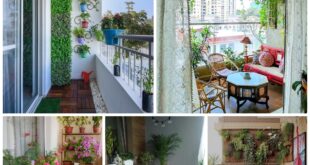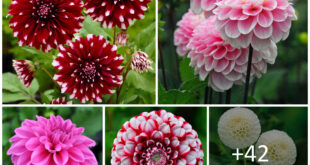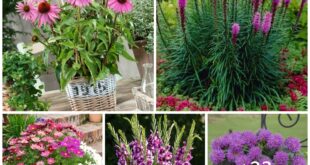Creating a vibrant and visually appealing garden with colorful flowers in planters can transform any outdoor space into a lively and inviting haven. Whether you have a sprawling garden, a cozy balcony, or a compact patio, designing planters with a mix of colorful blooms can elevate your garden aesthetics. Here’s a comprehensive guide to help you design your planters with colorful flowers.
1. Selecting the Right Planters
Choosing the right planters sets the foundation for your colorful garden design:
- Material: Planters come in various materials like terracotta, ceramic, plastic, metal, and wood. Each material has its own aesthetic appeal and practical considerations. For a vibrant look, consider brightly colored ceramic or painted wooden planters.
- Size and Shape: Different plants have different root space requirements. Opt for larger planters for plants with extensive root systems and smaller ones for compact flowers. Mixing sizes and shapes adds visual interest.
- Drainage: Ensure that your planters have proper drainage holes to prevent waterlogging, which can harm your plants.
2. Choosing a Color Palette
A well-thought-out color scheme can make your planter design visually cohesive:
- Monochromatic: Choose flowers in varying shades of a single color for a harmonious and elegant look.
- Analogous: Select colors that are next to each other on the color wheel, such as red, orange, and yellow, for a warm and cohesive feel.
- Complementary: Pair colors opposite each other on the color wheel, like purple and yellow or blue and orange, for a vibrant and striking contrast.
- Rainbow Theme: For a playful and lively garden, use a mix of many different colors to create a rainbow effect.
3. Selecting Colorful Flowers
Choosing the right flowers is crucial for achieving a colorful and long-lasting display:
- Annuals: These flowers bloom for one season and are perfect for adding bursts of color. Examples include petunias, marigolds, and zinnias.
- Perennials: These flowers return year after year, providing long-term beauty. Consider coneflowers, daylilies, and black-eyed Susans.
- Seasonal Blooms: Mix flowers that bloom at different times of the year to ensure continuous color. For example, combine spring tulips, summer begonias, and fall mums.
4. Arranging Your Flowers
Thoughtful arrangement of your flowers can enhance the visual appeal of your planters:
- Thriller, Filler, Spiller: This classic arrangement method involves placing a tall, eye-catching plant (thriller) in the center or back, surrounded by medium-height plants (fillers) and trailing plants (spillers) that cascade over the edges.
- Height and Layers: Arrange plants in layers, with taller plants at the back or center and shorter ones at the front or edges. This creates depth and dimension.
- Symmetry and Asymmetry: Symmetrical arrangements provide a formal and balanced look, while asymmetrical arrangements can create a more dynamic and natural appearance.
5. Incorporating Foliage
Don’t overlook the importance of foliage in your planter design. Greenery can complement and enhance the colors of your flowers:
- Variegated Leaves: Plants with variegated leaves, such as coleus or caladium, add additional color and texture.
- Silver and Gray Foliage: Plants like dusty miller or lamb’s ear can provide a soft, silvery backdrop that makes bright flowers stand out.
- Bold Greenery: Lush, green plants like ferns or hostas can create a beautiful contrast with colorful blooms.
 careyfashion.com Carey Fashion
careyfashion.com Carey Fashion






















